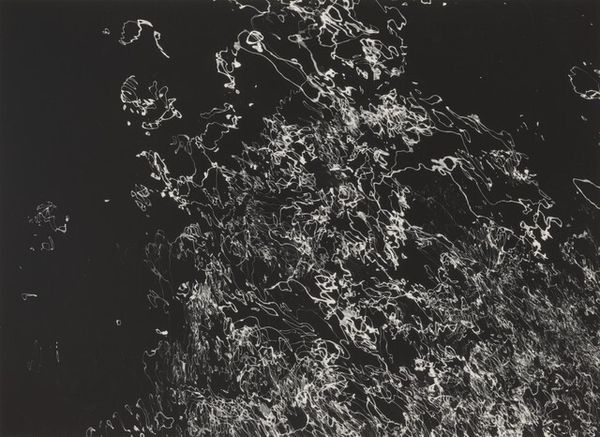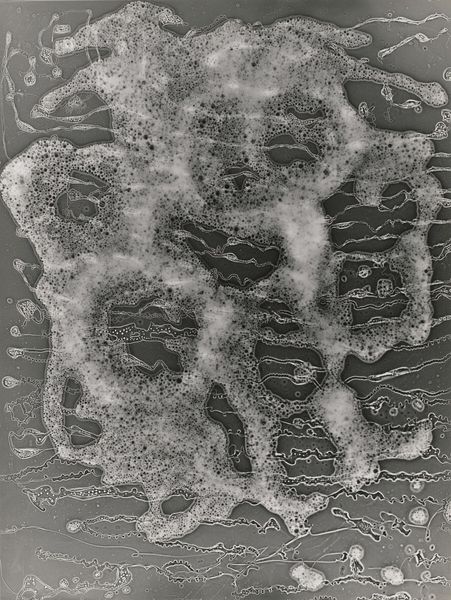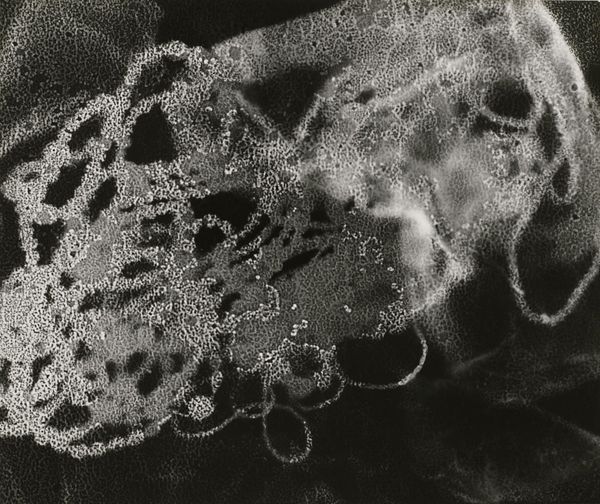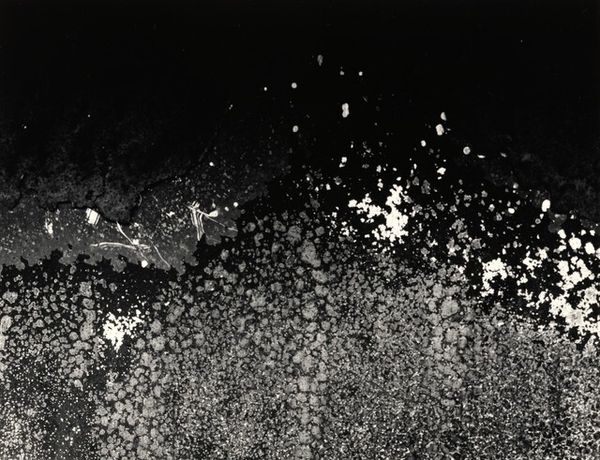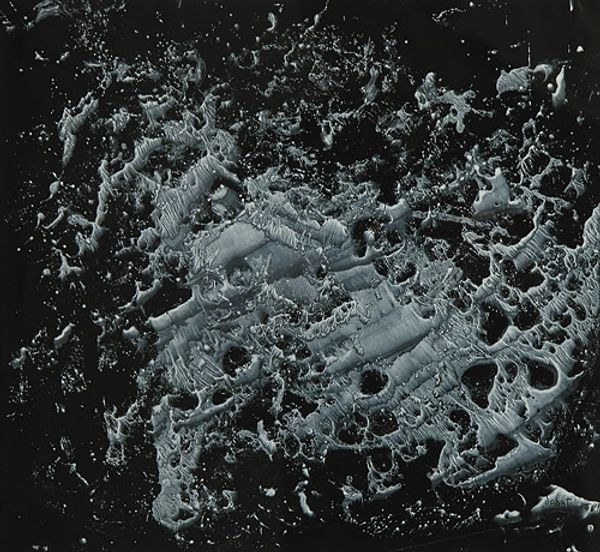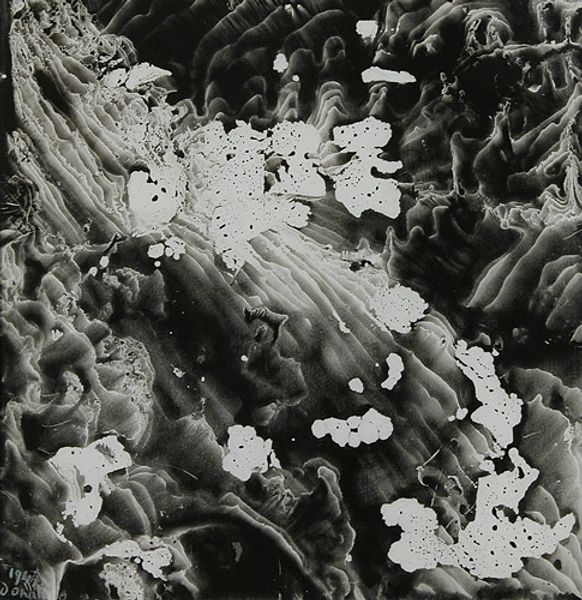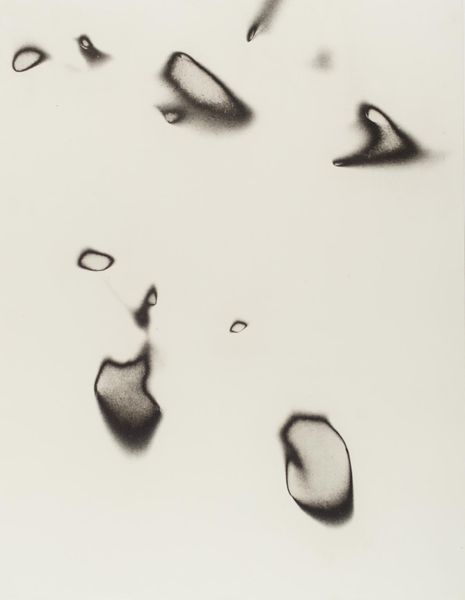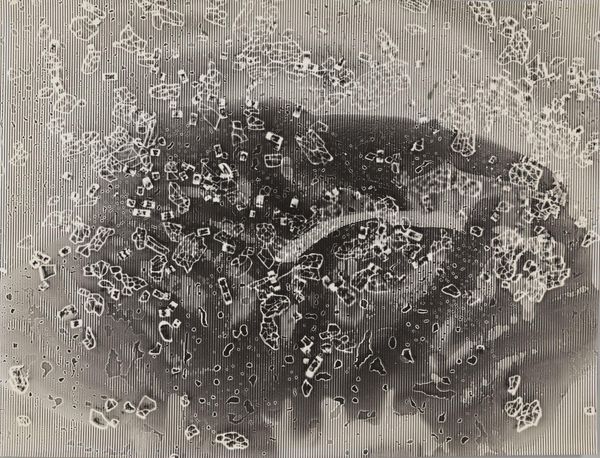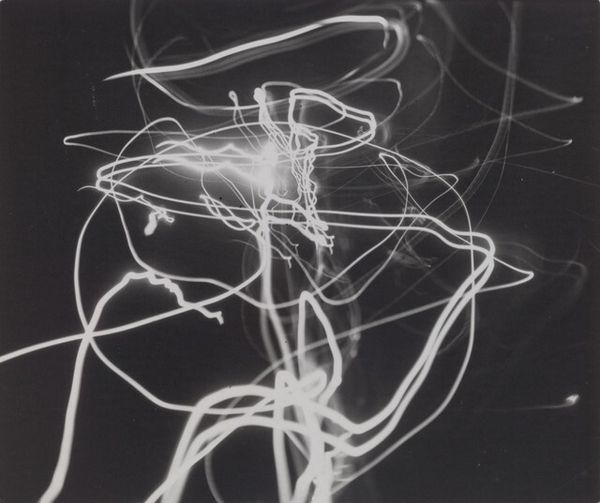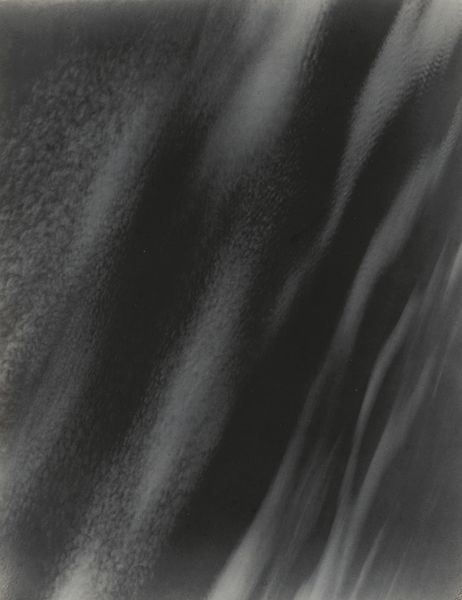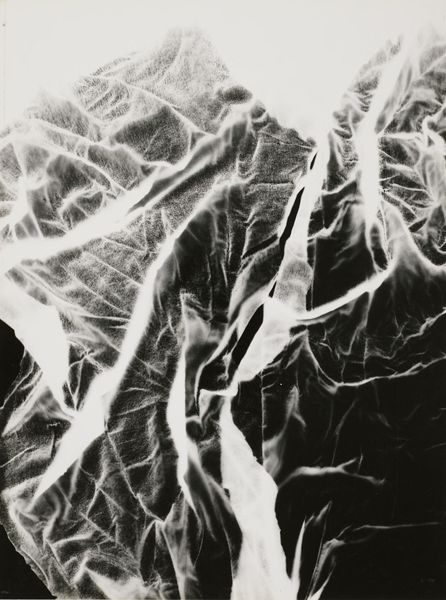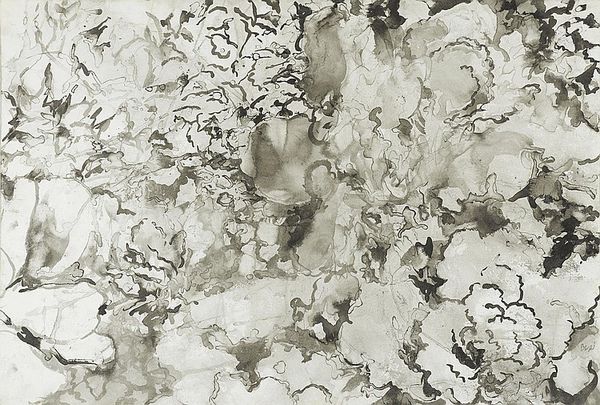
photography
#
abstract-expressionism
#
abstract expressionism
#
landscape
#
photography
#
abstract form
#
geometric
#
abstract nature shot
#
abstract-art
#
abstraction
#
line
#
abstract art
#
modernism
Dimensions: overall (sheet, trimmed to image): 8.26 x 11.11 cm (3 1/4 x 4 3/8 in.) mount: 9.05 x 11.91 cm (3 9/16 x 4 11/16 in.) mat: 27.94 x 35.56 cm (11 x 14 in.)
Copyright: National Gallery of Art: CC0 1.0
Editor: So, this is Harry Callahan's "Sunlight on Water" from 1943. It's a gelatin silver print and it’s striking how abstract it feels for something that's supposed to represent a natural scene. I’m curious to hear your take on it. What stands out to you? Curator: It is precisely this seeming contradiction between subject and representation that excites me. Callahan, through his use of photography, invites us to consider the production of art itself. It's not merely a rendering of light on water; it's an investigation into the material properties of photography – the contrast, the grain, the very chemical processes involved. How do these materials inform our understanding of "nature"? Editor: I see what you mean. The high contrast definitely makes it less about realistic representation. It makes me think about the darkroom and all that manipulating the image. Do you see any specific influence on it? Curator: Absolutely. This piece resonates with modernist ideals but does it in a new fashion, pushing photography beyond simple documentation. He’s manipulating light and shadow to almost create a new material. It blurs the lines between documenting and crafting, a pivotal challenge to traditional artistic hierarchies where painting was once considered of the greatest import. The social context matters: 1943 was a time of enormous upheaval; were there constraints on photographic supplies or equipment? That could influence the way he made the photograph and we, in turn, percieve it. Editor: That makes me appreciate how revolutionary it was. So much more than simply light reflecting on water, I will need to look into the historical conditions too. Curator: Indeed, considering photography as a constructed reality, as labor, fundamentally changes the narrative. We’re looking not just at art but production itself. Editor: I will never see photographs the same way! Curator: Callahan masterfully uses material constraints to elevate the subject to this study of form, and the very labour necessary in creating photography.
Comments
No comments
Be the first to comment and join the conversation on the ultimate creative platform.
